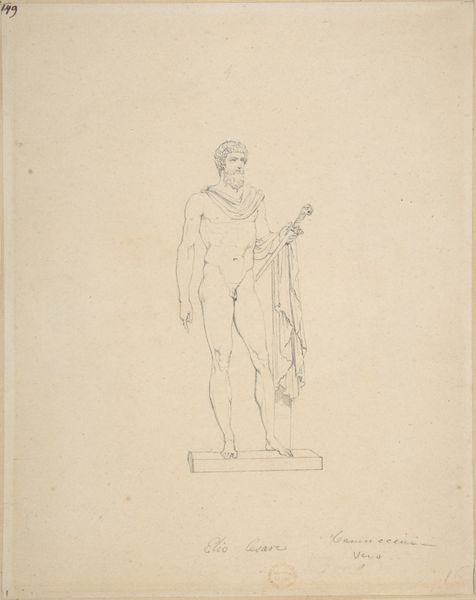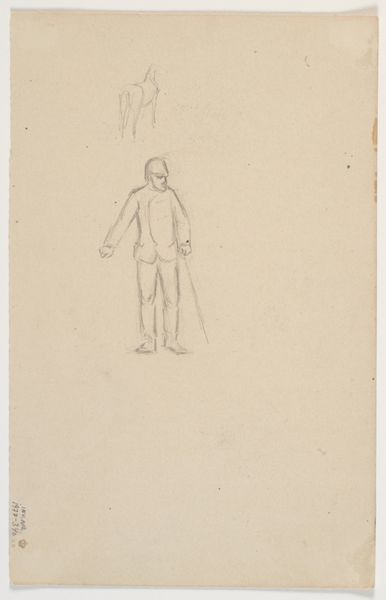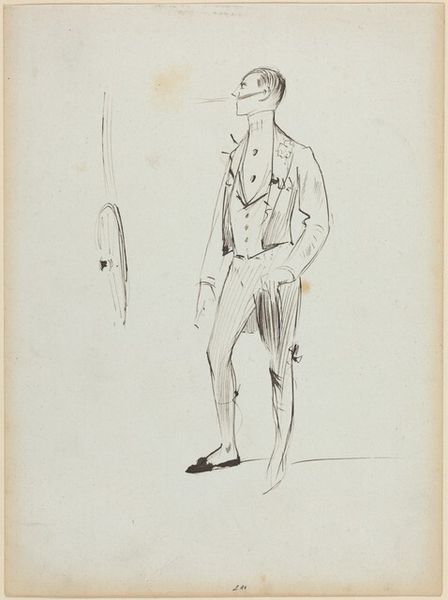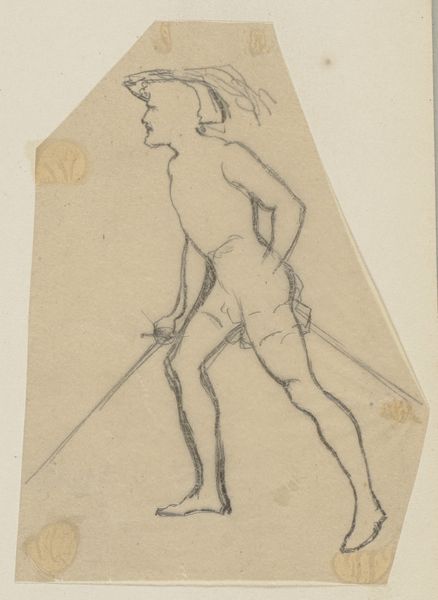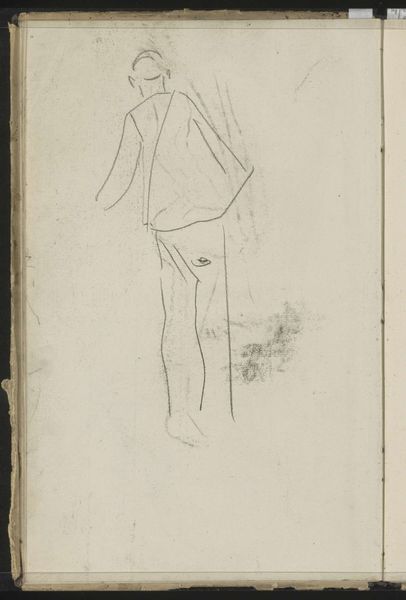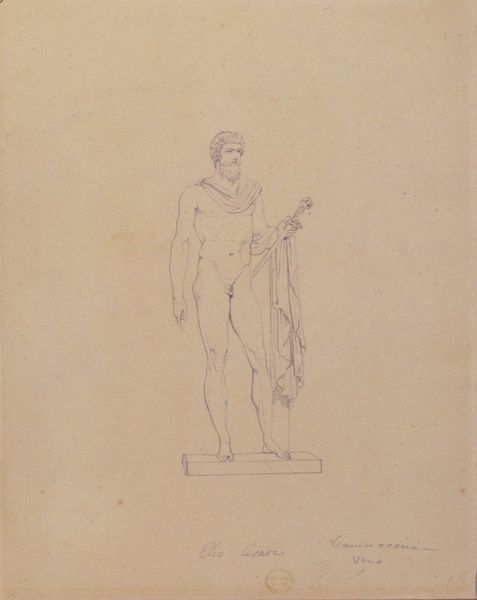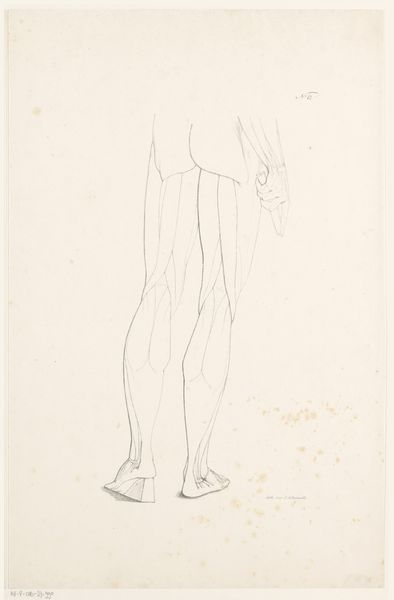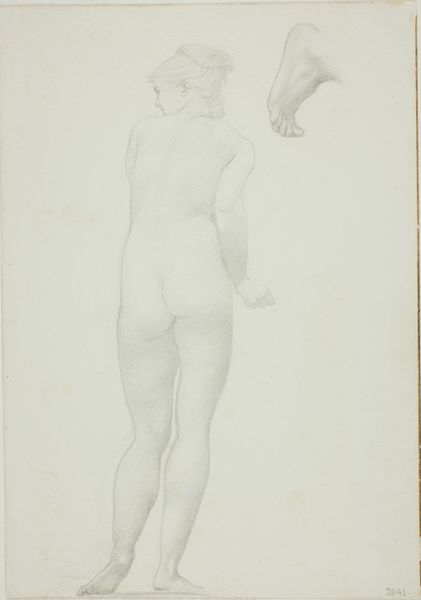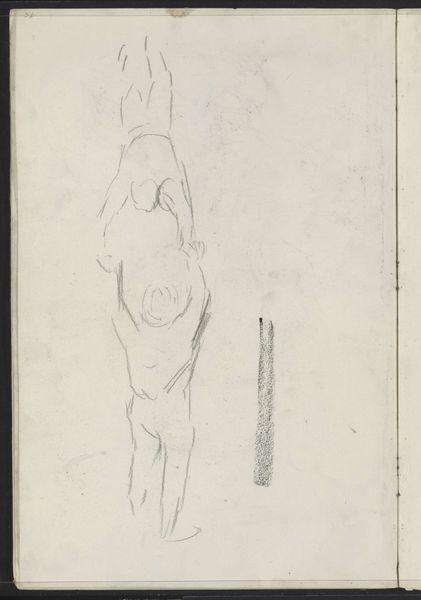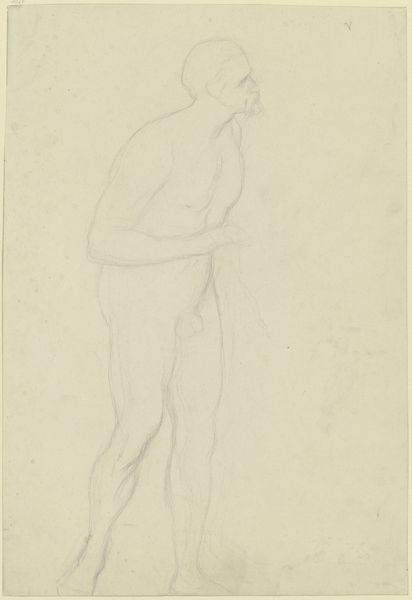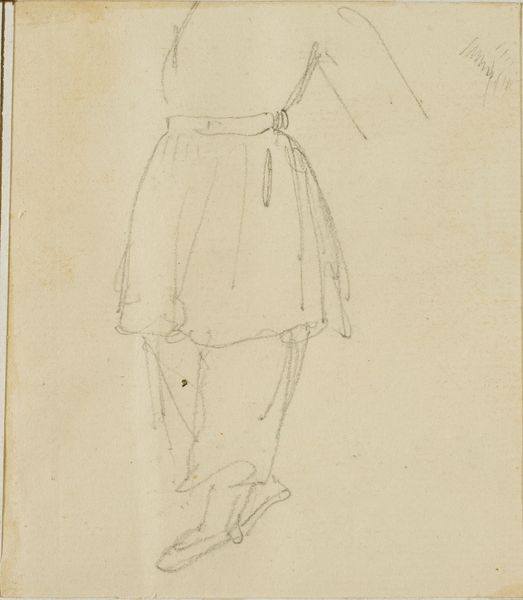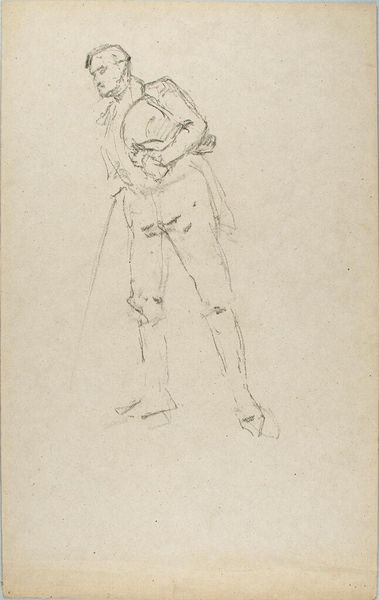
drawing, print, pencil
#
portrait
#
drawing
# print
#
pencil sketch
#
ancient-egyptian-art
#
figuration
#
ancient-mediterranean
#
pencil
#
line
#
history-painting
Dimensions: 10 1/4 x 9 7/8in. (26 x 25.1cm)
Copyright: Public Domain
Editor: This is "Standing Egyptian Figure", a pencil drawing, by Vincenzo Camuccini, from around 1771 to 1844, housed at the Metropolitan Museum of Art. It’s very sparse. The lines are delicate, and there’s such empty space around the figure itself. How would you interpret this work? Curator: Its formal qualities reveal an interesting tension. The figure itself is rendered with a clear linearity, almost diagrammatic in its precision. Camuccini isolates the form, allowing us to focus on the geometry of its composition: the strict verticality, the counterpoint between the staff and the held object. Editor: So, the artist wants us to see the structure first, before anything else? Curator: Precisely. Consider the treatment of light and shadow, or rather, its absence. By denying the figure volume through chiaroscuro, Camuccini underscores its symbolic essence over its physical presence. He is stripping the figure back to its most basic, iconic elements. Do you see how the bareness emphasises this reading? Editor: I think so. It makes the shapes of everything – the staff, the headdress – seem very important. Curator: Indeed. It transforms the figure from a representation of a specific individual to an emblem. The formal elements serve the overall theme and function in the creation of historical "knowledge". What are your closing thoughts? Editor: I was so caught up in seeing a sketch, that I initially overlooked how considered this artwork actually is, with the lack of ornamentation becoming part of the picture itself. Curator: Yes, the absence of expected artistic devices makes you re-think your point of reference. A successful study in visual communication.
Comments
No comments
Be the first to comment and join the conversation on the ultimate creative platform.
